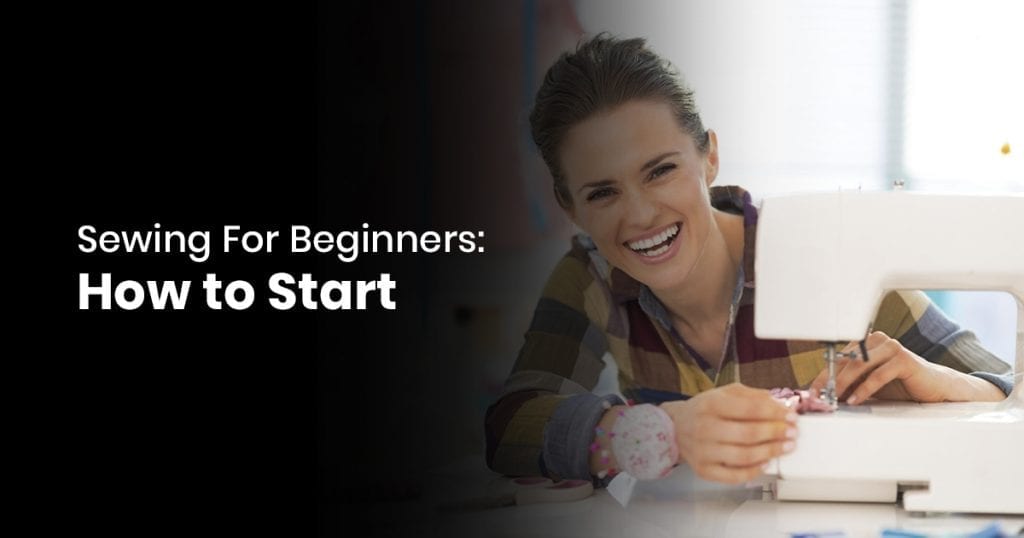Would you like to start sewing, but don’t know the first thing about it? Well, don’t dismay, help is out there.
Lots of budding sewers are out there but don’t know where to start.
The good news is that you can learn this skill if you have patience and apply yourself. Sooner or later, you will be well on your way to creating your own masterpieces.
In this guide, we will provide you with the essential sewing tips and accessories needed to get you started on your sewing journey.
So when it comes to sewing, exactly how or where do you start?
Firstly you will need all the right tools of the trade to get started.
This includes your sewing machine, the right type of thread, the right type of fabric, and all of the accessories that you need to create your first piece of clothing.
The following guide will take you through all of the essentials required for you to sew like a pro.
Contents
Sewing Essentials
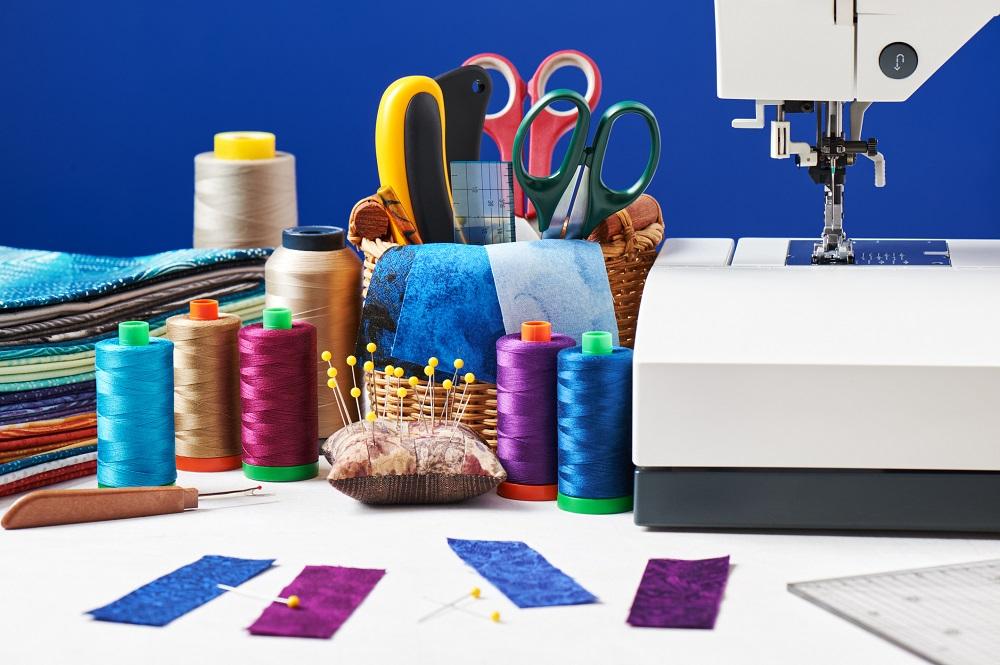
Although there isn’t anything wrong with sewing by hand, the invention of the sewing machine ensures that you can complete two-hour sewing projects in a matter of minutes with the sewing machine.
So whether you choose to rent, buy, thrift, or borrow one, you definitely need to get your hands on a good sewing machine.
Shopping for a sewing machine can seem daunting, however, all you need is a machine that has a straight stitch which will take care of most sewing jobs. If it has an adjustable zig-zag stitch, then all the better.
Full-size machines are the best for common sewing. If you would like to try before you buy, you can go to a specialist sewing shop or a large department store and try one out.
To keep it easy, simply buy a sewing machine online and don’t sweat the decision too much.
Next, you want to get a basic toolkit. This can be a low cost, and you don’t need to get everything at once.
However, to get started, you need a pair of fabric scissors, tape measure, pins, a seam marking tool, ironing board, and of course, iron.
You can find these on Amazon or various online retailers.
The next step in this process involves learning how to use your machine. So before you dive into your first project, get comfortable with your sewing machine.
Learn how to set it up, raise and lower the presser-foot, thread your machine, and of course, do some basic stitching practice on a piece of scrap fabric.
Once you’ve gotten your first sewing machine, familiarize yourself with it, and you also have gotten the basic tools, you can begin your first project.
When choosing a first project, go for a simple task like sewing a pillowcase a Christmas stocking.
Why did sewing become so popular?
They say there’s nothing new under the sun, and this is pretty much true.
There aren’t any of their new inventions or hobbies; however, everything has been recycled, and everything that is popular nowadays has been popular at some other point and time in history. If it’s popular now, then this is for a good reason as well.
If you haven’t already noticed, the world of sewing is booming. It’s become popular again.
Thanks to the Internet inventions of recent years, sewing has now allowed people to bring to life creations that have never before been imagined.
The invention of the computerized sewing machine has also created quite a stir amongst new and advanced sewers.
These machines range from $300-$3000, and although it is expensive, it allows you to create items of clothing in a fraction of the time that you would do when sewing by hand or even using the standard sewing machine.
Given the fact that technology has made sewing so simple and inconvenient, more and more people in this generation are taking to it.
How to start with sewing?
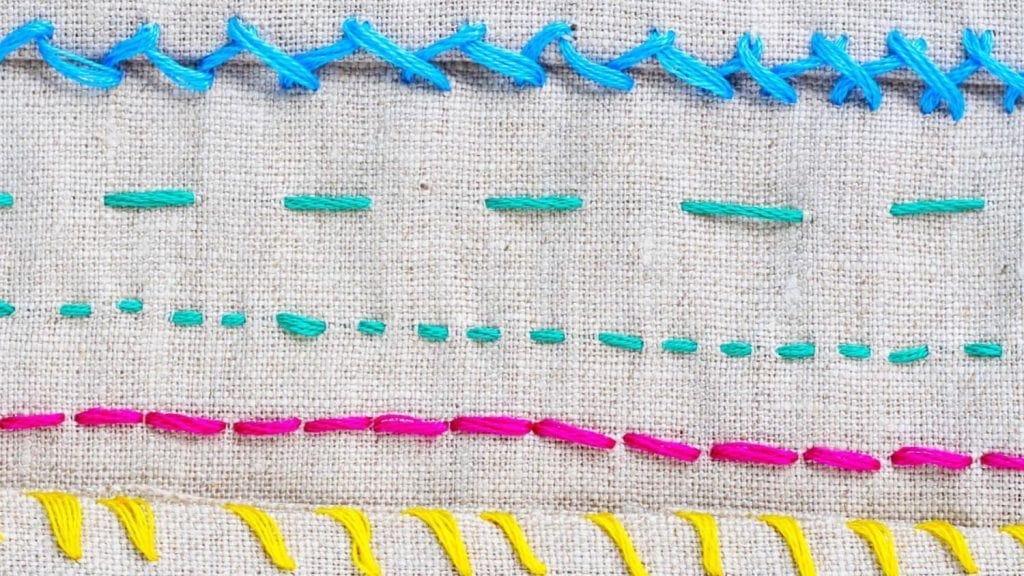
When you start sewing, there are a few things you need to remember to achieve sewing success.
The first thing you want to do is start off simple. So don’t go and choose a lined jacket for your first sewing project.
Start with simple patterns such as pillowcases or Christmas stockings or other simple things that you can create and give away as a gift or even keep for yourself.
Your work area could be a kitchen table, but make sure tiny hands stay far away from your work area. When you begin sewing, you often have a lot of sharp tools and possible choking hazards around. So the best thing to do would be to make sure it is out of reach of tiny hands.
Gather your tools and make sure that you have the basic sewing essentials. You don’t need to get everything at once. However, ensure that you get the basics so that you are able to learn the art of sewing as conveniently as possible.
Perhaps one of the best things you can do when learning how to sew is to master your sewing machine.
You can start by experimenting with fabric scraps or bags. This will save you hours of time before you start a new project, and when you do start on your project, it will allow you to focus on that specific project.
Remember to take the time to press. The seams should be closed and pressed and then open on one side.
Basic sewing tools
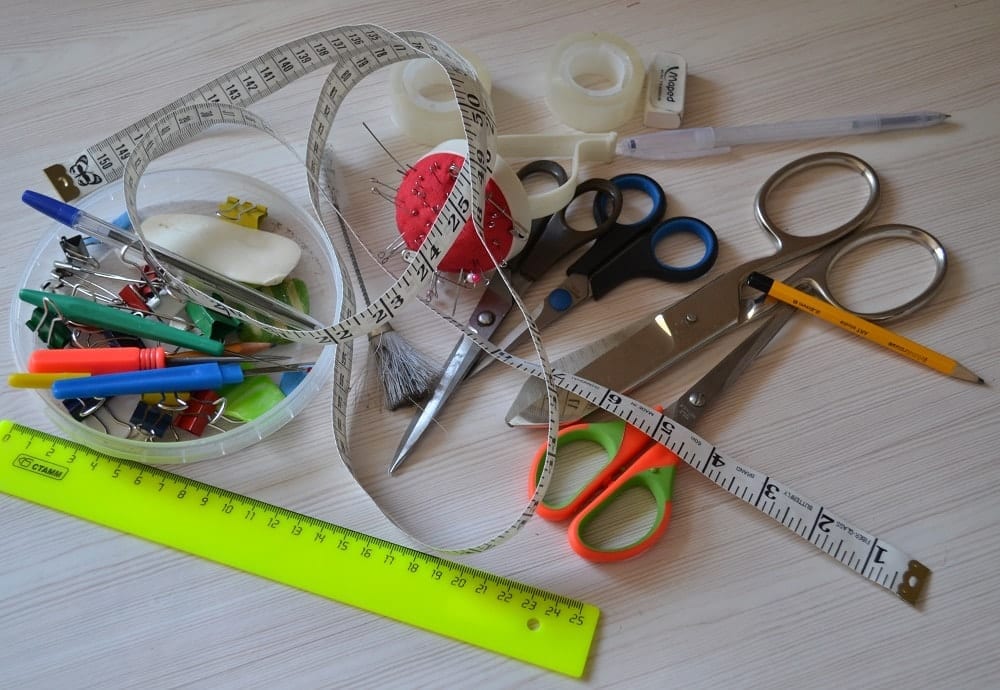
One of the most important tools you need when you start sewing is a pair of fabric scissors.
It’s very important that you only use them on your fabric.
Cutting through other materials like paper or cardboard will dull the blade and cause lots of functional frustration when you actually sit down to sew.
Tailor’s chalk
Tailor’s chalk is used to transfer markings onto the corresponding pieces of fabric.
This is essential, especially when working with fabric.
A good tip is that when you don’t need the marks anymore, simple rub another price of fabric over them to remove.
Seam ripper
No one enjoys removing stitches.
However, a seam ripper makes things easy and convenient. If you’ve made a mistake when revamping a piece, a seam ripper will help you out immensely.
All you need to remember is that these dull out after some use, so it needs to be replaced every once in a while.
Measuring tape
This goes without saying, but it is essential for professional sewing.
It’s useful if you need to take fitted body measurements, and it is also ideal for fabric width and items that are longer than your clear ruler or sewing gauge.
Water-soluble fabric marker
These markers are similar to tailor’s chalk, but the blue-collar creates crisp, light, and fine lines on white fabric.
The best part about fabric markers is that it washes away easily with water.
Seam gauge
This ruler is ideal for taking small measurements and creating perfect hems.
The arrow slider moves throughout the length of the ruler, and all you need to do is set it to the desired measurement, and you can easily mark a set length in various areas.
Thread
The thread collection you have will depend on the projects you’re planning on doing.
You want to match the color fabric as well. Always keep cream and black in stock.
Make sure that it is high quality, so that’s it doesn’t tangle easily or cause sewing machine malfunctions.
Pins
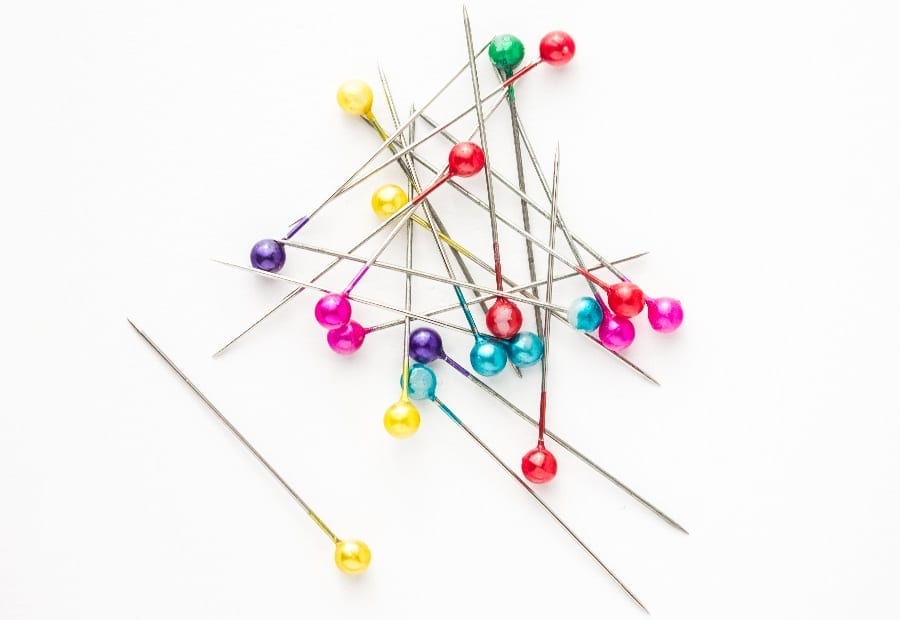
Use pins to hold multiple layers of fabric together until they are sewn.
The length and type of pins are up to you.
Thin ones are meant for fine fabric, and those that are longer are meant for quilting. General-purpose glass or plastic rounded pins are the most common.
Pin Cushion
You definitely need a pin cushion to store those pins.
Keeping them in a box is asking for trouble. So a pincushion is simply ideal and convenient for storing all of your various pins.
If you have just started sewing, then you probably have a sewing machine, but not a serger.
Most people are not sure exactly what the difference is between these two machines. Many people assume they do exactly the same thing.
However, there are some distinct functions that separate the two, and if you’re planning on taking up sewing professionally, you need to learn the difference between the two machines.
The Key Difference Between a Serger and a Sewing Machine
A serger is considered a specialized sewing machine and is often referred to as an overlock sewing machine.
Edges are beautifully finished with a serger.
Without a serger, you get an unfinished and often unprofessional look, and the fabric will often tend to fray over time.
A serger secures the edge of the fabric, which prevents fraying. Typical sergers make use of three to four threads.
Compare this to a sewing machine that only uses one thread and possibly two, a serger uses double the amount and also double the amount of needles.
Ultimately it gives your garments a more professional, durable seam, and the practicality of this is that it lasts longer.
Sergers are also much faster than sewing machines.
Not only do they trim edges and sew seams at a speed of 1700 stitches per minute, ultimately you get your work done in a fraction of the amount of time as you would using a sewing machine.
Features the serger and sewing machine have in common
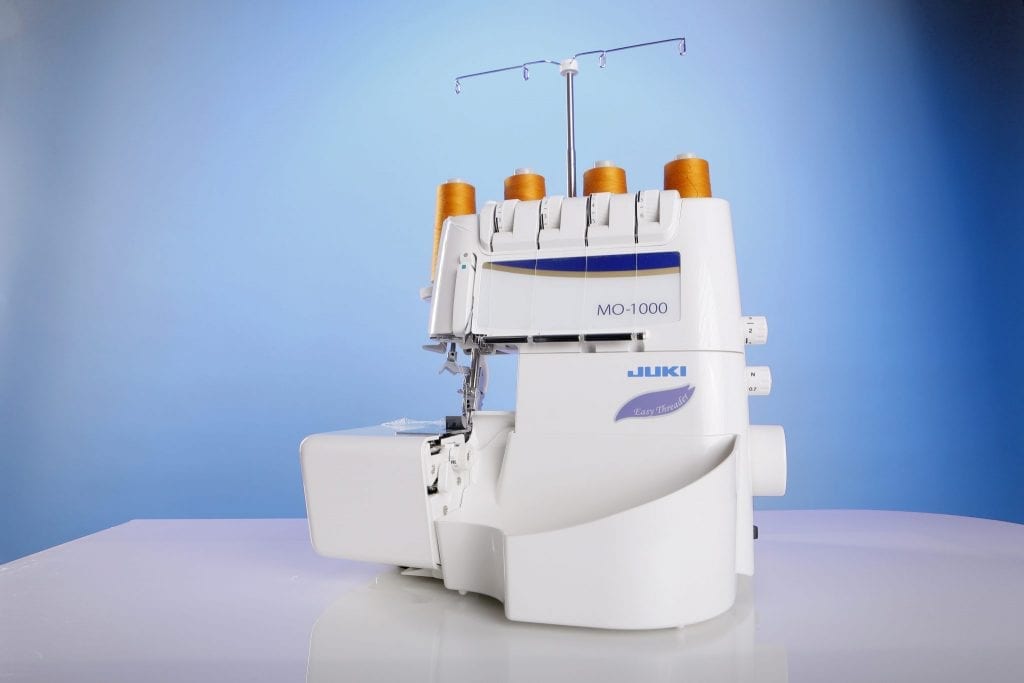
Sergers can do a lot of things that sewing machines do, for example:
- It can neatly do piping
- It can get the fabric
- It can do a narrow told him
- It can even hem knits
The serger does, however, have certain limitations.
Ultimately a serger is not a standalone machine, and it cannot replace your sewing machine for many projects.
You still need your trusty sewing machine to create buttonholes, facings, zippers, and complete topstitching.
So do I really need both?
Some people may not need a sewing machine and a serger.
However, you can get away with lots of projects using the sewing machine without a serger.
So a good quality sewing machine can complete many projects without the need for a serger. However, if you plan on sewing professionally, then a serger is something that will add great value to your garments.
So ultimately, a serger will help you create professional-looking garments that also last longer.
Alternatively, if you don’t want to purchase a serger and already have an existing sewing machine, you can also purchase something called an overlock foot attachment.
This gives your finished edges a great look.
It is almost as good as a serger but does not compare to the professionalism that is serger brings to your sewing experience.
5 Must have sewing accessories:
A good pair of fabric scissors
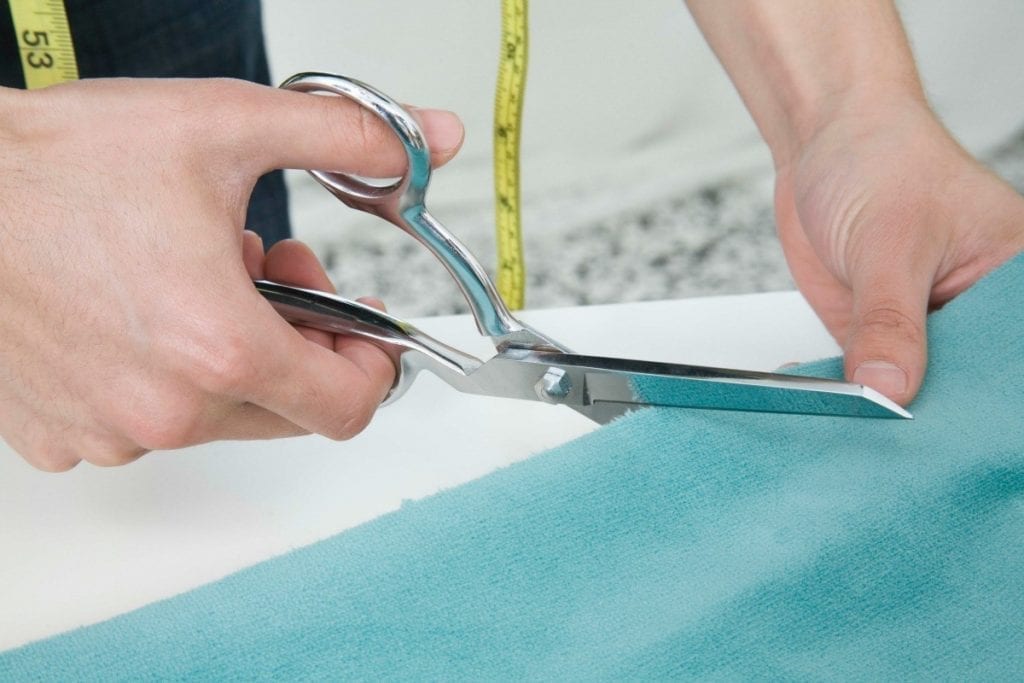
A decent pair of fabric scissors are needed to cut your fabric while sewing or multiply the embroidery thread.
These scissors have a distinct pointed tip that enables you to snip in tight areas. Ultimately you still get a clean cut without the fray.
Embroidery is a specific form of sewing, so specialty scissors are needed, especially when it comes to those tricky and hard to reach areas.
Pinking shears
These scissors have a saw-toothed blade instead of the straight one.
This allows it to cut a fashionable zig-zag line but also serves a more practical purpose.
When you are using material with rough edges, cutting the fabric often results in further fraying.
When you use pinking shears, it won’t prevent the fabric from fraying; however, this tool limits the extent of the fraying.
So ultimately, you get a cleaner finish.
Rotary cutter
This tool will allow you to cut through curves more accurately.
This is achieved by the rotary’s circular blade. It allows you to cut through several layers of fabric.
You can get efficiently cut a piece of the same shape and size by using this tool. The cutters are available in small to large sizes.
And each one serves a different purpose. Smaller ones are ideal for cutting out small and intricate curves, while larger ones are better for cutting straight lines or larger and broader curves.
Thimble
When working with sharp objects, there’s always a possibility of pricking your finger.
However, the worst thing that can happen aside from you getting hurt is that you bleed all over your fabric.
By using a thimble, you can keep your fingers safe just in case.
Cutting mat
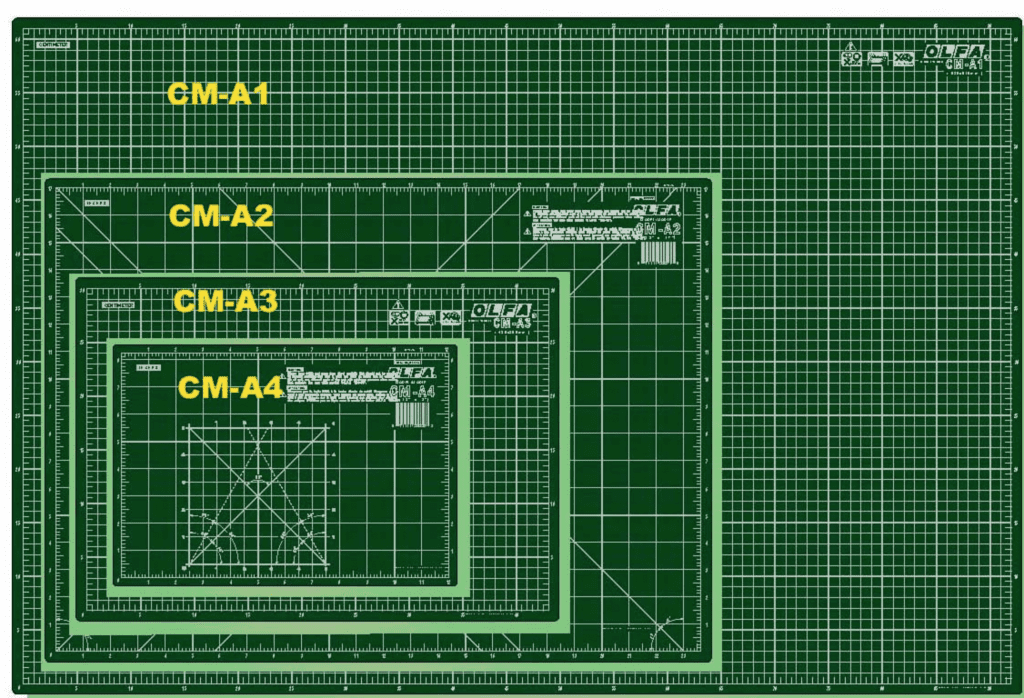
Unless you want to ruin your table, it is recommended that you use a cutting mat.
These mats prevent your table from getting damaged and also have marking, measurements and angles that help you to cut your fabric accurately.
You can get a basic one which is suitable for beginners, and you can find one that lasts longer and will also suit you when you are a more advanced sewer.
What is the best material for beginners?
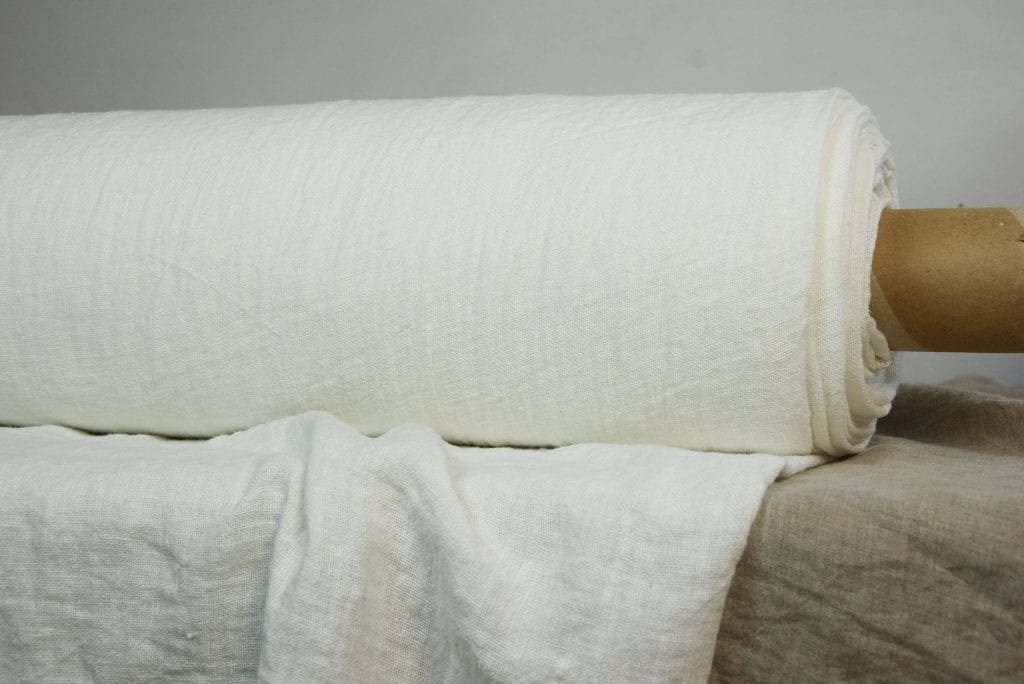
When you begin your sewing journey, it’s important to know that there are different types of fabrics, and some are more adaptable than others.
One of the most manageable fabrics to work on is cotton.
It’s versatile, light as a handkerchief, or can be as heavy as a canvas if the fabric is chosen for skirts, jeans, and dresses.
Fabrics can either be knitted or woven.
Some also made from cotton fibers, animal fibers, or man-made fibers. Knitted fabrics stretch more than woven fabrics, and this makes them harder to manage, so it’s not recommended for beginner sewers. Cotton is also relatively cheaper than other fabrics.
Woven linen is also recommended for your first project as it comes in a variety of weights and is great for summer. Linen is often a blend of cotton and can crease more than cotton.
It is also more expensive than it.
So the best projects to go for if choosing woven linen are tunics, sleeveless blouses, pajama pants shirt dresses.
Ultimately though, cotton is probably the most versatile and simplest type of fabric to work on, especially for your first project.
Time to Get Sewing
Sewing, although not an easy task to learn, can be a very rewarding one.
So although the thought of learning how to so can seem scary, keep your eye on the prize and think about all of the masterpieces you will be able to create once you learn the art of sewing.
Related Questions
Why is sewing so popular these days?
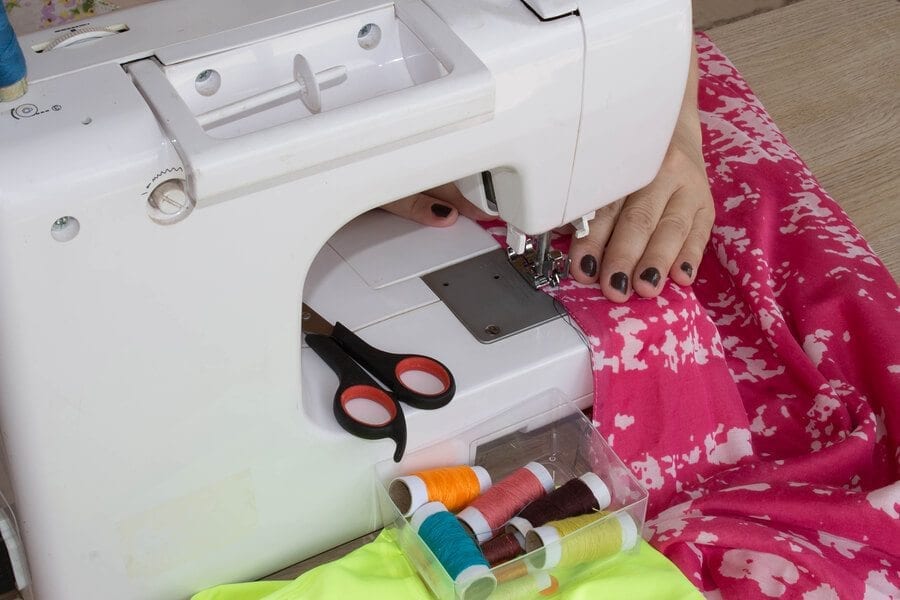
Well, the truth is it never really went out of fashion.
However, thanks to technology, the computerized sewing machine has now made it possible for this generation to create extraordinary garments.
Can I sew by hand?
Of course you can, however it will take you hours to complete a project that you would ordinarily finish in a matter of minutes with a sewing machine.
Is it costly to buy a sewing machine?
No, it doesn’t have to be.
Sewing machines can be bought used from various thrift stores. Alternatively opting for a standard sewing machine with basic straight stitching functionality is fairly cheap.

